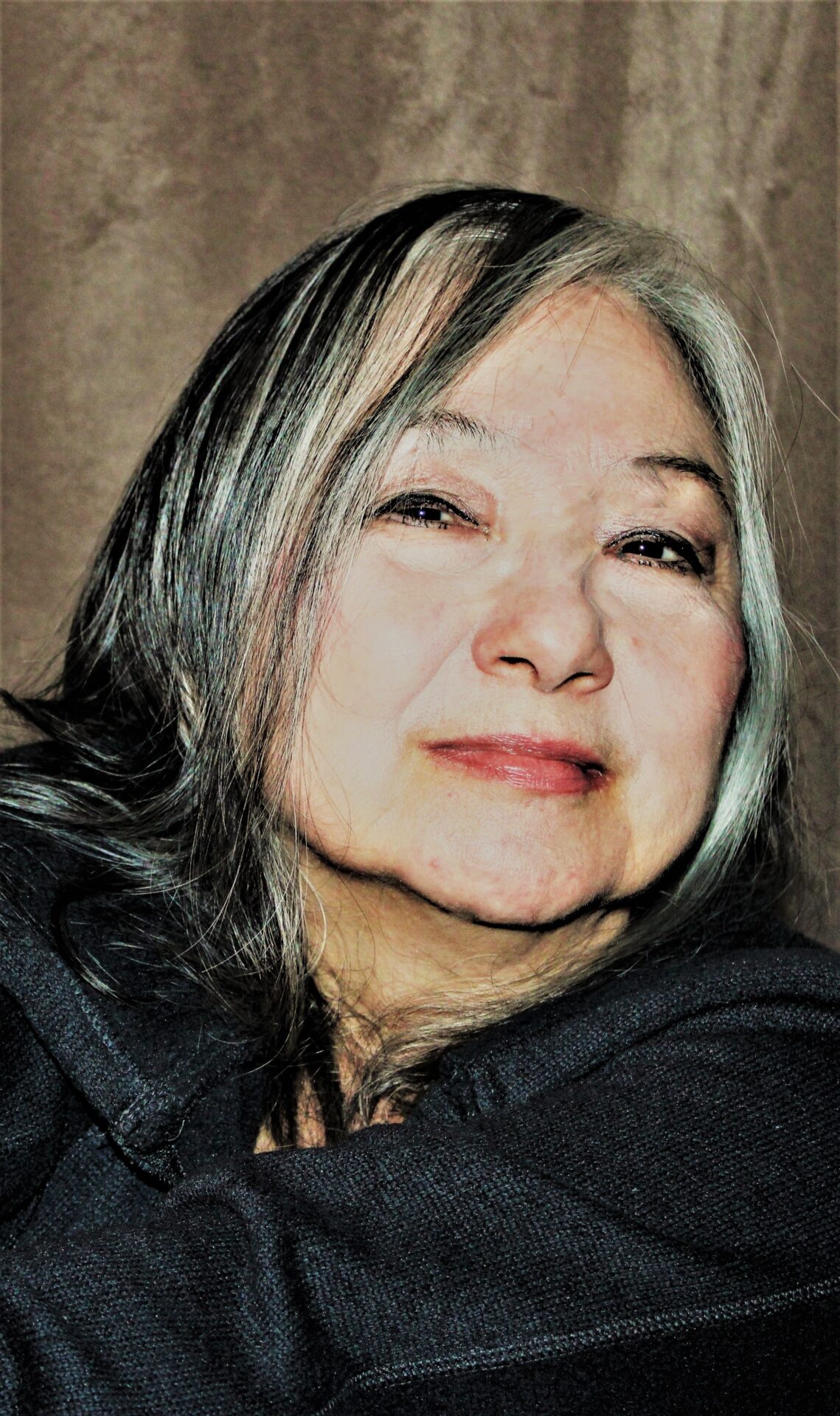…what are you doing that I cannot do
–from Black Elk Speaks
some might cancel this appropriation, say
they don’t know me, say I don’t know anything,
but I see in my reflection the same features: Yup’ik, Inuit, the Eastern Eskimo.
You saw them too, when I sat with you at powwow, my face the two-faced axe
left in a pit, with antler rods and dart points, at the mouth of the Upward Sun River.
You saw in me the sunrise child-girl swathed in ochre, let me sit
in the circle, find my way back to belonging. No dipnet, stick-spear, no fires lit
to find the oyster beds abundant. But I do what I can—lift the feather on the beat, gift
the drum tobacco, cleanse with sage the spaces where I tend
the sickness of this living without birdsong and the feel of dirt between my fingers,
sleep with legend:
how you rubbed the soldiers out, and the women on the hill made tremolo—which in my dreams becomes a song of sorrow. Not a past-life wound, not karmic illness,
but a refugee of tribe, the clan of standing at the mirror, where I see myself a ghost, traveling from Siberia across the frozen strait, migrating far, far away, up the coastal rivers to the north,
to the south, to the interior, paddling with the salmon toward the weir.
I honor the wild asparagus, the dandelion, the elderberry’s syrup. The bitter roots that stay
the long winter. My teeth like yours,
like those of lions in a standstill population now extinct.
Notes
The Blackfoot tradition holds that the first Indians lived on the other side of the ocean; the Hopi people say their ancestors had to travel through three worlds to cross the ocean to a new world. Genetic evidence supports a theory that ancestors of Native Americans lived for 15,000 years on the Bering Land Bridge between Asia and North America until the last ice age ended. As a hapa—half Japanese, half European—the question of ancestors has always been problematic. I stood outside both groups as observer, never fully integrated or accepted. It wasn’t until my thirties, when I began to participate in pow pow, that I recognized in features the root association: the same dark hair, the same high cheekbones, the same slant of the eyes. Something stirred, a powerful sense of belonging. Among first people, I learned that where I stood was the center of the world. I danced, made tremolo, made myself a dress of chamois.
About the Author

Kathleen Hellen’s collection meet me at the bottom is forthcoming in Fall 2022 from Main Street Rag. Her credits include The Only Country Was the Color of My Skin, her prize-winning collection Umberto’s Night, and two chapbooks, The Girl Who Loved Mothra and Pentimento. Featured on Poetry Daily and Verse Daily, her work has appeared in Ascent, Barrow Street, The Carolina Quarterly, Colorado Review, jubilat, New Letters, North American Review, Prairie Schooner, The Rumpus, Subtropics, The Sycamore Review, and West Branch, among others. For more on Kathleen, visit https://www.kathleenhellen.com/
Return to top